Black And Decker 7662B Handleiding
Black And Decker
Zaagmachine
7662B
Bekijk gratis de handleiding van Black And Decker 7662B (6 pagina’s), behorend tot de categorie Zaagmachine. Deze gids werd als nuttig beoordeeld door 37 mensen en kreeg gemiddeld 4.6 sterren uit 19 reviews. Heb je een vraag over Black And Decker 7662B of wil je andere gebruikers van dit product iets vragen? Stel een vraag
Pagina 1/6

General Safety Rules
WARNING! Read all instructions. Failure to follow all instructions listed below
may result in electric shock, fire and/or serious injury. The term “power tool” in all of
the warnings listed below refers to your mains-operated (corded) power tool or
battery-operated (cordless) power tool.
SAVE THESE INSTRUCTIONS
1) Work area safety
a) Keep work area clean and well lit.
Cluttered or dark areas invite accidents.
b) Do not operate power tools in explosive atmospheres, such as in the presence of
flammable liquids, gases or dust
. Power tools create sparks which may ignite the
dust or fumes.
c) Keep children and bystanders away while operating a power tool.
Distractions can
cause you to lose control
2) Electrical safety
a) Power tool plugs must match the outlet. Never modify the plug in any way. Do not
use any adapter plugs with earthed (grounded) power tools.
Unmodified plugs and
matching outlets will reduce risk of electric shock
b) Avoid body contact with earthed or grounded surfaces such as pipes, radiators,
ranges and refrigerators.
There is an increased risk of electric shock if your body is
earthed or grounded.
c) Do not expose power tools to rain or wet conditions.
Water entering a power tool
will increase the risk of electric shock.
d) Do not abuse the cord. Never use the cord for carrying, pulling or unplugging the
power tool. Keep cord away from heat, oil, sharp edges or moving parts.
Damaged or entangled cords increase the risk of electric shock.
e) When operating a power tool outdoors, use an extension cord suitable for
outdoor use.
Use of a cord suitable for outdoor use reduces the risk of electric shock.
3) Personal safety
a) Stay alert, watch what you are doing and use common sense when operating a
power tool. Do not use a power tool while you are tired or under the influence of
drugs, alcohol or medication.
A moment of inattention while operating power tool may
result in serious personal injury.
b) Use safety equipment. Always wear eye protection.
Safety equipment such as
dust mask, non-skid safety shoes, hard hat, or hearing protection used for appropriate
conditions will reduce personal injuries.
c) Avoid accidental starting. Ensure the switch is in the off-position before plugging
in.
Carrying power tools with your finger on the switch or plugging in power tools that
have the switch on invites accidents.
d) Remove any adjusting key or wrench before turning the power tool on.
A wrench
or a key left attached to a rotating part of the power tool may result in personal injury.
e) Do not overreach. Keep proper footing and balance at all times.
This enables better
control of the power tool in unexpected situations.
f) Dress properly. Do not wear loose clothing or jewelry. Keep your hair, clothing
and gloves away from moving parts.
Loose clothes, jewelry or long hair can be
caught in moving parts. Air vents often cover moving parts and should also be avoided.
g) If devices are provided for the connection of dust extraction and collection
facilities, ensure these are connected and properly used.
Use of these devices can
reduce dust-related hazards.
4) Power tool use and care
a) Do not force the power tool. Use the correct power tool for your application.
The
correct power tool will do the job better and safer at the rate for which it was designed.
b) Do not use the power tool if the switch does not turn it on and off.
Any power tool
that cannot be controlled with the switch is dangerous and must be repaired.
c) Disconnect the plug from the power source and/or the battery pack from the
power tool before making any adjustments, changing accessories, or storing
power tools.
Such preventive safety measures reduce the risk of starting the power
tool accidentally.
d) Store idle power tools out of the reach of children and do not allow persons
unfamiliar with the power tool or these instructions to operate the power tool.
Power tools are dangerous in the hands of untrained users.
e) Maintain power tools. Check for misalignment or binding of moving parts,
breakage of parts and any other condition that may affect the power tools
operation. If damaged, have the power tool repaired before use.
Many accidents
are caused by poorly maintained power tools.
f) Keep cutting tools sharp and clean.
Properly maintained cutting tools with sharp
cutting edges are less likely to bind and are easier to control.
g) Use the power tool, accessories and tool bits etc., in accordance with these
instructions and in the manner intended for the particular type of power tool,
taking into account the working conditions and the work to be performed.
Use of
the power tool for operations different from those intended could result in a hazardous
situation.
5) Service
a) Have your power tool serviced by a qualified repair person using only identical
replacement parts.
This will ensure that the safety of the power tool is maintained.
Specific Safety Rules
•Hold tool by insulated gripping surfaces when performing an operation where the
cutting tool may contact hidden wiring or its own cord. Contact with a "live" wire will
make exposed metal parts of the tool "live" and shock the operator.
•Keep hands away from cutting area. Never reach underneath the material for any rea-
son. Hold front of saw by grasping the contoured gripping area. Do not insert fingers or
thumb into the vicinity of the reciprocating blade and blade clamp. Do not stabilize the
saw by gripping the shoe.
•Keep blades sharp. Dull blades may cause the saw to swerve or stall under pressure.
•When cutting pipe or conduit ensure that they are free from water, electrical wiring,
etc.
•Allow the motor to come to a complete stop before withdrawing the blade from the
kerf (the slot created by cutting). A moving blade may impact the workpiece causing a
broken blade, workpiece damage or loss of control and possible personal injury.
•Never hold work in your hand, lap or against parts of your body when sawing. The
saw my slip and the blade could contact the body causing injury.
•Keep handles dry, clean, free from oil and grease. This will enable better control of the
tool.
•Use extra caution when cutting overhead and pay particular attention to overhead
wires which may be hidden from view. Anticipate the path of falling branches and debris
ahead of time.
• Clean out your tool often, especially after heavy use. Dust and grit containing metal
particles often accumulate on interior surfaces and could create an electric shock hazard.
•Do not operate this tool for long periods of time. Vibration caused by the operating
action of this tool may cause permanent injury to fingers, hands, and arms. Use gloves to
provide extra cushion, take frequent rest periods, and limit daily time of use.
WARNING: Some dust created by power sanding, sawing, grinding, drilling, and
other construction activities contains chemicals known to cause cancer, birth
defects or other reproductive harm. Some examples of these chemicals are:
• lead from lead-based paints,
• crystalline silica from bricks and cement and other masonry products, and
• arsenic and chromium from chemically-treated lumber (CCA).
Your risk from these exposures varies, depending on how often you do this type of work. To
reduce your exposure to these chemicals: work in a well ventilated area, and work with
approved safety equipment, such as those dust masks that are specially designed to filter
out microscopic particles.
•Avoid prolonged contact with dust from power sanding, sawing, grinding, drilling,
and other construction activities. Wear protective clothing and wash exposed areas
with soap and water. Allowing dust to get into your mouth, eyes, or lay on the skin may
promote absorption of harmful chemicals.
WARNING: Use of this tool can generate and/or disperse dust, which may cause serious
and permanent respiratory or other injury. Always use NIOSH/OSHA approved respiratory
protection appropriate for the dust exposure. Direct particles away from face and body.
CAUTION: Wear appropriate hearing protection during use. Under some conditions
and duration of use, noise from this product may contribute to hearing loss.
SAFETY GUIDELINES - DEFINITIONS
It is important for you to read and understand this manual. The information it contains
relates to protecting YOUR SAFETY and PREVENTING PROBLEMS. The symbols below
are used to help you recognize this information.
DANGER: Indicates an imminently hazardous situation which, if not avoided, will result
in death or serious injury.
WARNING: Indicates a potentially hazardous situation which, if not avoided, could
result in death or serious injury.
CAUTION: Indicates a potentially hazardous situation which, if not avoided, may result
in minor or moderate injury.
CAUTION: Used without the safety alert symbol indicates potentially hazardous situation
which, if not avoided, may result in property damage.
The label on your tool may include the following symbols.
V ..........................volts A..........................amperes
Hz ........................hertz W ........................watts
min........................minutes ......................alternating current
......................direct current no........................no load speed
.......................... Class II Construction ........................earthing terminal
........................safety alert symbol .../min ..................revolutions or
reciprocations
per minute
CAT. NO. 7662 FORM NO. 90510243 Copyright © 2007 Black & Decker MAR. ‘07 Printed in China
Features - Figure A
1. Single speed switch
2. Lock-on button
3. Saw blade clamp
4. Saw blade clamp screws
5. Saw blade support roller
6. Dust blower
7. Shoe plate
8. Saw blade storage compartment
A
VEA EL ESPAÑOL EN LA CONTRAPORTADA.
SAVE THIS MANUAL FOR FUTURE REFERENCE.
INSTRUCTIVO DE OPERACIÓN, CENTROS DE SERVICIO Y PÓLIZA DE GARANTÍA.
ADVERTENCIA: LÉASE ESTE INSTRUCTIVO ANTES DE USAR EL PRODUCTO.
INSTRUCTION MANUAL
S
S
S
S
S
S
S
S
S
Si
i
i
i
i
i
i
i
i
in
n
n
n
n
n
n
n
n
ng
g
g
g
g
g
g
g
g
gl
l
l
l
l
l
l
l
l
le
e
e
e
e
e
e
e
e
e
S
S
S
S
S
S
S
S
S
Sp
p
p
p
p
p
p
p
p
pe
e
e
e
e
e
e
e
e
ee
e
e
e
e
e
e
e
e
ed
d
d
d
d
d
d
d
d
d
J
J
J
J
J
J
J
J
J
Ji
i
i
i
i
i
i
i
i
ig
g
g
g
g
g
g
g
g
gs
s
s
s
s
s
s
s
s
sa
a
a
a
a
a
a
a
a
aw
w
w
w
w
w
w
w
w
w
BEFORE RETURNING THIS PRODUCT
FOR ANY REASON PLEASE CALL
1-800-544-6986
BEFORE YOU CALL, HAVE THE FOLLOWING INFORMATION AVAILABLE, CATALOG No., TYPE No., AND
DATE CODE . IN MOST CASES, A BLACK & DECKER REPRESENTATIVE CAN RESOLVE THE PROBLEM
OVER THE PHONE. IF YOU HAVE ASUGGESTION OR COMMENT, GIVE US ACALL. YOUR FEEDBACK IS
VITALTO BLACK & DECKER.
Catalog Number
7662
T
THANK
HANK YOU
YOU FOR
FOR CHOOSING
CHOOSING B
BLACK
LACK &
&D
DECKER
ECKER!
!
G
GO
OT
TO
OWWW
WWW.B
.B LACKAND
LACKAND D
DECKER
ECKER.
.COM
COM /N
/NEW
EWO
OWNER
WNER
T
TO
OREGISTER
REGISTER YOUR
YOUR NEW
NEW PRODUCT
PRODUCT.
.
1
2
3
5
4
6
7
8

USE OF EXTENSION CORDS
Make sure the extension cord is in good condition before using. Always use the proper size
extension cords with the tool – that is, proper wire size for various lengths of cord and heavy
enough to carry the current the tool will draw. Use of an undersized cord will cause a drop in
line voltage resulting in loss of power and overheating. For proper size cords see chart
below.
MOTOR
Be sure your power supply agrees with nameplate marking. 120 Volts AC only means your
tool will operate on standard 60 Hz household power. Do not operate AC tools on DC. A
rating of 120 volts AC/DC means that you tool will operate on standard 60 Hz AC or DC
power. This information is printed on the nameplate. Lower voltage will cause loss of power
and can result in over-heating. All Black & Decker tools are factory-tested; if this tool does
not operate, check the power supply.
SAVE THESE INSTRUCTIONS
Assembly/Adjustment Set-up
INSTALLING BLADES
WARNING: Before attempting any of the following operations, make sure that the tool is
switched off and unplugged and that the saw blade has stopped. Used saw blades can be
hot.
Using a flat blade screwdriver, loosen (do not remove) the two screws "A" in Figure B.
Ensure the blade teeth are facing forward and insert the saw blade shank fully into the blade
clamp. Slightly tighten screws alternately to position the blade, then fully tighten screws. To
release, turn both screws one turn counterclockwise.
Note: To improve cutting performance, ensure back of blade is touching blade support roller.
See "Roller Support Guide"for instructions on how to change position of blade support roller.
BLADE SUPPORT ROLLER
TURN OFF AND UNPLUG TOOL.
The blade support roller on your jigsaw improves its performance when cutting tough
materials by adding support to the blade. This support should be adjusted so that the roller
touches the back of the blade when cutting. Ensure the blade is aligned with the groove in
the roller. Adjust the support roller by loosening the screw on the bottom of the shoe (Fig.B)
and moving the shoe so that the roller touches the back edge of the blade. Retighten screw.
Lubricating the guide roller from time to time with a drop of oil will extend the life of the roller.
NOTE: Roller support guide not applicable when shoe is beveled to 45 degrees.
Minimum Gage for Cord Sets
Volts Total Length of Cord in Feet
120V 0-25 26-50 51-100 101-150
(0-7,6m) (7,6-15,2m) (15,2-30,4m) (30,4-45,7m)
240V 0-50 51-100 101-200 201-300
(0-15,2m) (15,2-30,4m) (30,4-60,9m) (60,9-91,4m)
Ampere Rating
More Not more American Wire Gage
Than Than
0 - 6 18 16 16 14
6 - 10 18 16 14 12
10 - 12 16 16 14 12
12 - 16 14 12 Not Recommended
ON/OFF SWITCH
BEFORE PLUGGING YOUR JIGSAW IN, ENSURE THAT THE TRIGGER SWITCH IS IN
THE OFF POSITION.
To turn the saw on, squeeze the trigger switch, as shown in Figure C. To turn the tool off,
release the trigger switch. The tool can be locked on for continuous operation by fully
squeezing and holding the trigger switch while you depress the lock-on button shown in
Fig. C. With the lock-on button depressed, release the trigger switch and the tool will
continue to run. To release from lock position, squeeze and release the trigger. Always
disengage the lock before disconnecting from the power supply.
BEVEL ADJUSTMENT
TURN OFF AND UNPLUG TOOL.
To adjust the bevel angle, loosen the screw (approximately 3 full turns) on the bottom of the
shoe, as shown in Figure B. Lift the shoe slightly and pull backward, then set the shoe at
45° and retighten screw. To reset the shoe for a square cut, loosen the screw and move the
shoe until it is approximately 90° to the blade. Adjust the blade support roller to the blade
and retighten the screw.
GENERAL CUTTING
Be sure board is firmly secured. Hold jigsaw by the handle and operate switch to turn the
unit on. Don’t attempt to turn on the unit when blade is against material to be cut. This could
stall the motor. Place front of shoe on material to be cut and hold jigsaw shoe down firmly
against the work surface while cutting. Don’t force the tool; let the blade cut at its own speed.
Whenever possible, clamp or support work close to the line of cut; when the cut is
completed, shut off power and lay the saw aside before loosening the work.
AUTOMATIC DUST BLOWER
To aid visibility when cutting, your jigsaw is equipped with an automatic dust blower (Fig. C)
which will keep the work area clear of dust as you saw.
BLADE STORAGE
A convenient blade storage compartment (Fig. D) is provided at the rear of the saw.
METAL & PLASTIC CUTTING
In cutting thin gauge sheet metals, it is best to clamp wood or plywood to the bottom of the
metal sheet; this will insure a clean cut without the danger of vibration or tearing of metal.
Use a fine-tooth blade for ferrous metals (for those that have an iron content); and use a
coarser blade for nonferrous metals (those that do not have an iron content).
Cutting thin metal will take longer than cutting relatively thick wood so do not be tempted to
speed up the process by forcing the saw. Spread a thin film of cutting lubricant along the
cutting line (any light weight oil).
When cutting laminated plastic, place the finished side down and use a fine tooth hollow
ground blade.
POCKET CUTTING
• Measure the surface to be cut and mark clearly with a pencil. Next tip the saw forward
until the front edge of the shoe sits firmly on the work surface, but with the blade well
clear of it Figure E.
• Turn the tool on and allow it to attain maximum speed by fully depressing the trigger
switch.
• Grip the handle firmly and slowly lower the back edge of tool until the blade cuts
smoothly into material. Do not move the jigsaw forward along the cut line until the saw
blade has completely entered the material and shoe comes to rest flat on its surface.
RIP & CIRCLE CUTTING
Ripping and circle cutting without a pencil line are easily done with the rip fence and circle
guide (available at extra cost).
Using the screw supplied with the accessory guide, position as shown in Figure F and thread
the screw into the shoe to clamp the fence securely.
When circle cutting, adjust rip fence so that distance from blade to hole in cross bar is at the
desired radius and tighten screw (use hole which lines up best with saw blade). Place saw
so that hole in cross bar is over center of circle to be cut (make pocket cut, drill hole for blade
or cut inward from edge of material to get blade into position). When saw is properly
positioned, drive a small nail through hole in cross bar. Using rip fence as a pivot arm, begin
cutting circle. For circle cutting, the cross bar should be up, as shown in Figure F.
When ripping, slide the rip fence under the screw from either side of the saw. Set the cross
bar at desired distance from blade and tighten screw. For ripping, the cross bar should be
down and against the straight edge of the workpiece.
MAINTENANCE
Use only mild soap and damp cloth to clean the tool. Never let any liquid get inside the tool;
never immerse any part of the tool into a liquid.
IMPORTANT: To assure product SAFETY and RELIABILITY, repairs, maintenance and
adjustment should be performed by authorized service centers or other qualified service
organizations, always using identical replacement parts.
TROUBLESHOOTING
Problem Possible Cause Possible Solution
• Unit will not start. • Cord not plugged in. • Plug tool into a working
outlet.
• Circuit fuse is blown. • Replace circuit fuse.
(If the product repeatedly
causes the circuit fuse to
blow, discontinue use
immediately and have it
serviced at a Black &
Decker service center or
authorized servicer.)
• Circuit breaker is tripped. • Reset circuit breaker.
(If the product repeatedly
causes the circuit breaker
to trip, discontinue use
immediately and have it
serviced at a Black &
Decker service center or
authorized servicer.)
• Cord or switch is damaged. • Have cord or switch
replaced at Black &
Decker Service Center or
Authorized Servicer.
For assistance with your product, visit our website www.blackanddecker.com for the loca-
tion of the service center nearest you or call the BLACK & DECKER help line at
1-800-544-6986.
ACCESSORIES
Recommended accessories for use with your tool are available from your local dealer or
authorized service center. If you need assistance regarding accessories, please call:
1-800-544-6986
WARNING: The use of any accessory not recommended for use with this tool could be
hazardous.
SERVICE INFORMATION
Black & Decker offers a full network of company-owned and authorized service locations
throughout North America. All Black & Decker Service Centers are staffed with trained
personnel to provide customers with efficient and reliable power tool service. Whether you
need technical advice, repair, or genuine factory replacement parts, contact the
Black & Decker location nearest you. To find your local service location, refer to the yellow
page directory under "Tools—Electric" or call: 1-800-544-6986.
FULL TWO-YEAR HOME USE WARRANTY
Black & Decker (U.S.) Inc. warrants this product for two years against any defects in
material or workmanship. The defective product will be replaced or repaired at no charge in
either of two ways.
The first, which will result in exchanges only, is to return the product to the retailer from
whom it was purchased (provided that the store is a participating retailer). Returns should
be made within the time period of the retailer’s policy for exchanges (usually 30 to 90 days
after the sale). Proof of purchase may be required. Please check with the retailer for their
specific return policy regarding returns that are beyond the time set for exchanges.
The second option is to take or send the product (prepaid) to a Black & Decker owned or
authorized Service Center for repair or replacement at our option. Proof of purchase may
be required. Black & Decker owned and authorized Service Centers are listed under
"Tools–Electric" in the yellow pages of the phone directory.
This warranty does not apply to accessories. This warranty gives you specific legal rights
and you may have other rights which vary from state to state. Should you have any
questions, contact the manager of your nearest Black & Decker Service Center. This
product is not intended for commercial use.
Free warning label replacement: If your warning labels become illegible or are missing,
call 1-800-544-6986 for a free replacement.
F
G
E
D
See ‘Tools-Electric’
– Yellow Pages –
for Service & Sales
Black & Decker (U.S.) Inc.,
701 E. Joppa Rd.
Towson, MD 21286 U.S.A.
B C
BLADE CLAMP
ROLLER SUPPORT
GUIDE
A
SHOE
SCREW
TRIGGER SWITCH
LOCK ON BUTTON
BLADE STORAGE
DUST BLOWER

Règles de sécurité générales
AVERTISSEMENT! Lire toutes les directives. Tout manquement aux directives
suivantes pose des risques de choc électrique, d’incendie et/ou de blessure grave.
Le terme « outil électrique » dans tous les avertissements ci-après se rapporte à
votre outil électrique à alimentation sur secteur (avec fil) ou par piles (sans fil).
CONSERVER CES DIRECTIVES
1) Sécurité du lieu de travail
a) Tenir la zone de travail propre et bien éclairée.
Les endroits sombres sont souvent
des causes d'accidents.
b) Ne pas faire fonctionner d’outils électriques dans un milieu déflagrant, soit en
présence de liquides inflammables, de gaz ou de poussière.
Les outils électriques
produisent des étincelles qui peuvent enflammer la poussière ou les vapeurs.
c) Éloigner les enfants et les curieux au moment d’utiliser un outil électrique.
Une
distraction pourrait vous en faire perdre la maîtrise.
2) Sécurité en matière d’électricité
a) Les fiches des outils électriques doivent correspondre à la prise. Ne jamais
modifier la fiche en aucune façon.
Ne jamais utiliser de fiche d’adaptation avec un
outil électrique mis à la terre. Le risque de choc électrique sera réduit par l’utilisation
de fiches non modifiées correspondant à la prise.
b) Éviter tout contact physique avec des surfaces mises à la terre comme des
tuyaux, des radiateurs, des cuisinières et des réfrigérateurs.
Le risque de choc
électrique est plus élevé si votre corps est mis à la terre.
c) Ne pas exposer les outils électriques à la pluie ou à d'autres conditions où il
pourrait être mouillé.
La pénétration de l’eau dans un outil électrique augmente le
risque de choc électrique.
d) Ne pas utiliser abusivement le cordon d’alimentation. Ne jamais utiliser le
cordon pour transporter, tirer ou débrancher un outil électrique. Tenir le cordon
éloigné de la chaleur, de l’huile, des bords tranchants ou des pièces mobiles.
Les cordons endommagés ou emmêlés augmentent les risques de choc électrique.
e) Pour l’utilisation d’un outil électrique à l’extérieur, se servir d’une rallonge
convenant à une telle utilisation.
L’utilisation d’une rallonge conçue pour l’extérieur
réduit les risques de choc électrique.
3) Sécurité personnelle
a) Être vigilant, surveiller le travail effectué et faire preuve de jugement lorsqu’un
outil électrique est utilisé. Ne pas utiliser d’outil électrique en cas de fatigue ou
sous l’influence de drogues, d’alcool ou de médicaments.
Un moment d’inattention,
durant l’utilisation d’un outil électrique, peut se solder par des blessures graves.
b) Utiliser un équipement de sécurité. Toujours porter une protection oculaire.
L’utilisation d’un équipement de sécurité comme un masque anti-poussières, des
chaussures antidérapantes, un casque de sécurité ou des protecteurs auditifs lorsque
la situation le requiert réduira les risques de blessures corporelles.
c) Attention de ne pas mettre en marche l’outil accidentellement. S’assurer que
l’interrupteur est en position d’arrêt avant tout branchement.
Transporter un outil
électrique alors que le doigt est sur l’interrupteur ou brancher un outil électrique alors
que l’interrupteur est en position de marche risque de causer un accident.
d) Retirer toute clé de réglage ou clé standard avant de démarrer l’outil.
Une clé
standard ou une clé de réglage attachée à une partie pivotante peut causer des
blessures.
e) Ne pas trop tendre les bras. Conserver son équilibre en tout temps.
Cela permet
de mieux maîtriser l’outil électrique dans les situations imprévues.
f) S’habiller de manière appropriée. Ne pas porter de vêtements amples ni de
bijoux. Maintenir cheveux, vêtements et gants éloignés des pièces mobiles.
Les
vêtements amples, bijoux ou cheveux longs pourraient s'enchevêtrer dans les pièces
mobiles.
g) Si des composants sont fournis pour le raccordement de dispositifs de
dépoussiérage et de ramassage, s’assurer que ceux-ci sont bien raccordés et
utilisés.
L’utilisation de ces dispositifs peut réduire les risques engendrés par les
poussières.
4) Utilisation et entretien d’un outil électrique
a) Ne pas forcer un outil électrique. Utiliser l’outil électrique approprié à
l’application.
L’outil électrique approprié effectuera un meilleur travail, de façon plus
sûre et à la vitesse pour laquelle il a été conçu.
b) Ne pas utiliser un outil électrique dont l’interrupteur est défectueux.
Tout outil
électrique dont l’interrupteur est défectueux est dangereux et doit être réparé.
c) Débrancher la fiche du secteur ou le bloc-piles de l’outil électrique avant de faire
tout réglage ou changement d’accessoire, ou avant de ranger l’outil électrique.
Ces mesures préventives réduisent les risques de démarrage accidentel de l’outil
électrique.
d) Ranger les outils électriques hors de la portée des enfants, et ne permettre à
aucune personne n’étant pas familière avec un outil électrique (ou son manuel
d’instruction) d’utiliser ce dernier
. Les outils électriques deviennent dangereux entre
les mains d’utilisateurs inexpérimentés.
e) Entretenir les outils électriques. Vérifier les pièces mobiles pour s’assurer
qu’elles sont bien alignées et tournent librement, qu’elles sont en bon état et ne
sont affectées par aucun trouble susceptible de nuire au bon fonctionnement de
l’outil électrique
.
En cas de dommage, faire réparer l’outil électrique avant toute
nouvelle utilisation.
Beaucoup d’accidents sont causés par des outils électriques mal
entretenus.
CONSERVER LE PRÉSENT GUIDE À TITRE DE RÉFÉRENCE
AVANT DE RETOURNER CE PRODUIT POUR QUELQUE
RAISON QUE CE SOIT, COMPOSER LE
1-800-544-6986
AVANT D’APPELER, AYEZ EN MAIN LE N° DE CATALOGUE ET LE CODE DE DATE. DANS LAPLUPART DES
CAS, UN REPRÉSENTANT DE BLACK & DECKER PEUT RÉSOUDRE LE PROBLÈME PAR
TÉLÉPHONE. SI VOUS AVEZ UNE SUGGESTION OU UN COMMENTAIRE, APPELEZ-NOUS. VOS
IMPRESSIONS SONT CRUCIALES POUR BLACK & DECKER.
M
MERCI
ERCI D
D’
’A
AVOIR
VOIR CHOISI
CHOISI B
BLACK
LACK & D
& DECKER
ECKER !
!
V
VISITEZ
ISITEZ WWW
WWW.B
.BLACKAND
LACKANDD
DECKER
ECKER.
.COM
COM/N
/NEW
EWO
OWNER
WNER
POUR
POUR ENREGISTRER
ENREGISTRER VOTRE
VOTRE NOUVEAU
NOUVEAU PRODUIT
PRODUIT.
.
S
S
S
S
S
S
S
S
S
SC
C
C
C
C
C
C
C
C
CI
I
I
I
I
I
I
I
I
IE
E
E
E
E
E
E
E
E
ES
S
S
S
S
S
S
S
S
SA
A
A
A
A
A
A
A
A
AU
U
U
U
U
U
U
U
U
UT
T
T
T
T
T
T
T
T
TE
E
E
E
E
E
E
E
E
EU
U
U
U
U
U
U
U
U
US
S
S
S
S
S
S
S
S
SE
E
E
E
E
E
E
E
E
EÀ
À
À
À
À
À
À
À
À
ÀU
U
U
U
U
U
U
U
U
UN
N
N
N
N
N
N
N
N
NE
E
E
E
E
E
E
E
E
EV
V
V
V
V
V
V
V
V
VI
I
I
I
I
I
I
I
I
IT
T
T
T
T
T
T
T
T
TE
E
E
E
E
E
E
E
E
ES
S
S
S
S
S
S
S
S
SS
S
S
S
S
S
S
S
S
SE
E
E
E
E
E
E
E
E
E
MODE D’EMPLOI
N° de catalogue 7662
f) S’assurer que les outils de coupe sont aiguisés et propres.
Les outils de coupe
bien entretenus et affûtés sont moins susceptibles de se coincer et sont plus faciles à
contrôler.
g) Utiliser l’outil électrique, les accessoires, les mèches, etc., conformément aux
présentes directives et suivant la manière prévue pour ce type particulier d’outil
électrique, en tenant compte des conditions de travail et du travail à effectuer.
L’utilisation d’un outil électrique pour toute opération autre que celle pour laquelle il a
été conçu est dangereuse.
5) Réparation
a) Faire réparer l’outil électrique par un réparateur professionnel en n’utilisant que
des pièces de rechange identiques
. Cela permettra de maintenir une utilisation
sécuritaire de l’outil électrique.
Consignes de sécurité particulières
• Tenir l’outil par les surfaces isolées prévues à cette fin lorsqu’il risque d’entrer en
contact avec des fils cachés ou son propre cordon, car de tels contacts peuvent mettre
les pièces métalliques de l’outil sous tension, engendrant des risques de choc électrique.
• Garder les mains éloignées des zones de coupe. Ne pas mettre les mains sous la pièce
pour quelque raison que ce soit. Saisir la section profilée à l’avant de l’outil. Ne pas mettre
les doigts ou le pouce près de la lame à va-et-vient ni de sa bride de serrage. Ne pas
stabiliser la scie en saisissant le patin.
• Maintenir les lames bien aiguisées en tout temps; les lames usées peuvent faire dévier
la scie ou faire caler le moteur lorsqu’on exerce une pression sur l’outil.
• Lorsqu’on coupe des tuyaux ou des conduits, on doit s’assurer qu’ils ne renferment pas
d’eau ni de fil électrique, etc.
• Attendre que le moteur s’arrête complètement avant de retirer la lame de l’entaille (la
fente créée par la coupe). Une lame qui bouge peut rebondir contre la pièce et se briser ou
endommager la pièce ou encore, faire perdre la maîtrise de l’outil et causer des risques de
blessure.
• Ne tenez jamais le travail dans votre main, recouvrement ou contre des parties de
votre corps en sciant. La scie ma glissade et la lame a pu entrer en contact avec le corps
causant des dommages.
• Garder les poignées propres, sèches et exemptes de toute trace d’huile et de graisse
afin d’éviter de perdre la maîtrise de l’outil.
• Utiliser la prudence supplémentaire en coupant des fraiss généraux et paie l'attention
particulière à au-dessus les fils qui peuvent être cachés de la vue. Prévoir le chemin de
branches et le débris en baisse en avance.
• Bien nettoyer l’outil périodiquement, surtout après l’avoir utilisé longuement, car la
poussière et les particules métalliques tendent à s’accumuler sur les surfaces internes et
peuvent entraîner des risques de choc électrique.
• Ne pas utiliser cet outil pendant des périodes prolongées. Les vibrations causées par
l’action de fonctionnement de l’outil peuvent blesser en permanence les doigts, les mains et
les bras. Porter des gants pour amortir les vibrations, faire des pauses fréquentes et limiter le
temps d’utilisation quotidien de l’outil.
AVERTISSEMENT : Certains outils électriques, tels que les sableuses, les scies, les
meules, les perceuses ou certains autres outils de construction, peuvent produire de
la poussière contenant des produits chimiques susceptibles d’entraîner le cancer,
des malformations congénitales ou pouvant être nocifs pour le système reproductif.
Parmi ces produits chimiques, on retrouve :
• le plomb dans les peintures à base de plomb,
• la silice cristalline dans les briques et le ciment et autres produits de maçonnerie,
• l’arsenic et le chrome dans le bois de sciage ayant subi un traitement chimique (comme
l’arséniate de cuivre et de chrome).
Le risque associé à de telles expositions varie selon la fréquence avec laquelle on effectue
ces travaux. Pour réduire l’exposition à de tels produits, il faut travailler dans un endroit bien
aéré et utiliser le matériel de sécurité approprié, tel un masque anti-poussières
spécialement conçu pour filtrer les particules microscopiques.
• Éviter tout contact prolongé avec la poussière soulevée par cet outil ou autres outils
électriques. Porter des vêtements de protection et nettoyer les parties exposées du
corps avec de l’eau savonneuse. S’assurer de bien se protéger afin d’éviter d’absorber
par la bouche, les yeux ou la peau des produits chimiques nocifs.
AVERTISSEMENT : Cet outil peut produire et répandre de la poussière susceptible de
causer des dommages sérieux et permanents au système respiratoire. Toujours utiliser un
appareil respiratoire anti-poussières approuvé par le NIOSH ou l’OSHA. Diriger les
particules dans le sens opposé du visage et du corps.
AVERTISSEMENT : Porter un dispositif de protection personnel anti-bruit approprié
durant l’utilisation. Sous certaines conditions et pendant toute la durée de
l’utilisation, le bruit émanant de ce produit pourrait contribuer à la perte d’audition.
LIGNES DIRECTRICES EN MATIÈRE DE SÉCURITÉ - DÉFINITIONS
Il est important que vous lisiez et compreniez ce mode d’emploi. Les informations qu’il
contient concernent VOTRE SÉCURITÉ et visent à ÉVITER TOUT PROBLÈME. Les
symboles ci-dessous servent à vous aider à reconnaître cette information.
DANGER : Indique une situation dangereuse imminente qui, si elle n’est pas évitée, causera
la mort ou des graves blessures.
AVERTISSEMENT : Indique une situation potentiellement
dangereuse qui, si elle n’est pas évitée, pourrait causer la mort ou de graves blessures.
MISE EN GARDE : Indique une situation potentiellement dangereuse qui, si elle n’est pas
évitée, pourrait causer des blessures mineures ou modérées.
MISE EN GARDE : Utilisé sans le symbole d’alerte à la sécurité, indique une situation
potentiellement dangereuse qui, si elle n’est pas évitée, peut résulter en des dommages à la
propriété.
L’étiquette de l’outil peut comporter les symboles suivants.
V ....................................volts A..........................ampères
Hz ..................................hertz W ........................watts
min..................................minutes ......................courant alternatif
................................courant continu no ........................sous vide
.................................... construction de classe II ........................borne de terre
..................................symbole d´avertissement .../min ..................tours ou courses
à la minute
Caractéristiques – Figure A
1. Interrupteur à une vitesse
2. Bouton de verrouillage
3. Bride de serrage de la lame de scie
4. Vis de la bride de serrage de la lame de scie
5. Roulette d’appui de la lame de scie
6. Dépoussiéreur
7. Plaque de la semelle
8. Compartiment de rangement pour lames
RALLONGES
S’assurer que la rallonge est en bon état avant de l’utiliser. Toujours utiliser une rallonge qui
convient à l’outil, c’est-à-dire dont le calibre des fils, la longueur du cordon et les valeurs
nominales correspondent à l‘outil alimenté. L’usage d’une rallonge de calibre insuffisant
pourrait causer une chute de tension entraînant une perte de puissance et une surchauffe.
Pour s’assurer qu’on utilise le calibre approprié, consulter le tableau indiqué ci-dessous.
Calibre minimal des cordons de rallonge
Tension Longueur totale du cordon en pieds
120V 0-25 26-50 51-100 101-150
(0-7,6m) (7,6-15,2m) (15,2-30,4m) (30,4-45,7m)
240V 0-50 51-100 101-200 201-300
(0-15,2m) (15,2-30,4m) (30,4-60,9m) (60,9-91,4m)
Intensité (A)
Au Au Calibre moyen des fils (AWG)
moins plus
0 - 6 18 16 16 14
6 - 10 18 16 14 12
10 - 12 16 16 14 12
12 - 16 14 12 Non recommandé
Product specificaties
| Merk: | Black And Decker |
| Categorie: | Zaagmachine |
| Model: | 7662B |
Heb je hulp nodig?
Als je hulp nodig hebt met Black And Decker 7662B stel dan hieronder een vraag en andere gebruikers zullen je antwoorden
Handleiding Zaagmachine Black And Decker

26 Augustus 2024

26 Augustus 2024

28 Juni 2024

17 Augustus 2023

6 Juli 2023

18 Juni 2023

17 Juni 2023

16 Juni 2023

12 Juni 2023

11 Juni 2023
Handleiding Zaagmachine
- Husqvarna
- ACG
- Donau Elektronik
- RIDGID
- Craftsman
- Stanley
- Dedra
- Practixx
- Narex
- Ultranatura
- Kress
- Powerworks
- Vonroc
- Proviel
- Kraftronic
Nieuwste handleidingen voor Zaagmachine
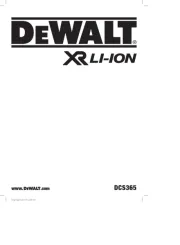
3 Augustus 2025
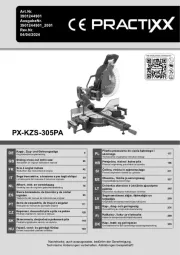
30 Juli 2025
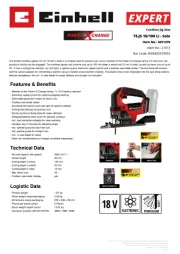
29 Juli 2025
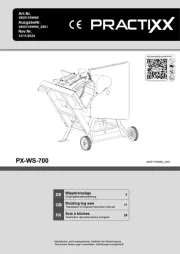
29 Juli 2025
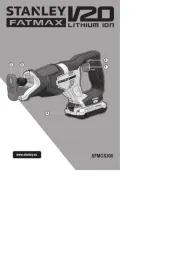
29 Juli 2025
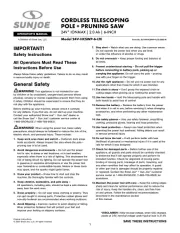
29 Juli 2025
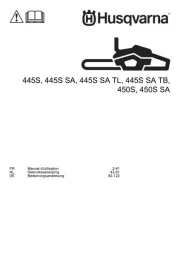
28 Juli 2025
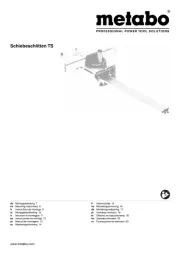
23 Juli 2025
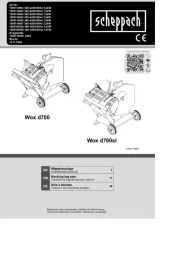
21 Juli 2025
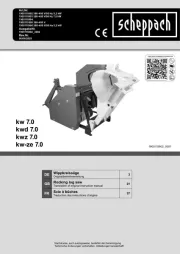
21 Juli 2025